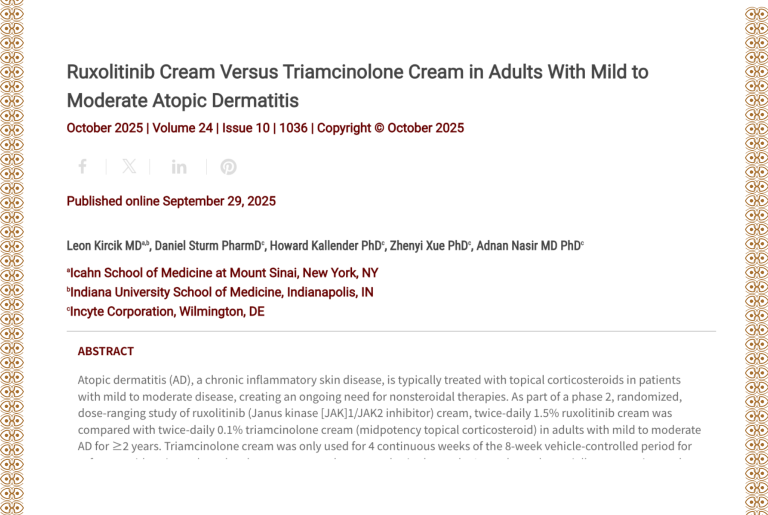
Fast itch relief and comparable skin clearance at week 4 – a nonsteroidal option to note for mild-moderate AD
In a phase 2, dose‑ranging trial, twice‑daily 1.5% ruxolitinib cream matched or exceeded the effects of twice‑daily 0.1% triamcinolone cream at the 4‑week mark in adults with mild-moderate atopic dermatitis of ≥2 years’ duration. More patients on ruxolitinib achieved EASI75 and EASI90, and investigator‑rated clear/almost clear (IGA 0/1) rates favored the JAK inhibitor (56.0% vs 47.1% for EASI75; 26.0% vs 13.7% for EASI90; IGA 38.0% vs 25.5%).
Importantly, itch improved rapidly – significant reductions were seen as early as day 2 and markedly by week 4 (≥4‑point NRS improvement 62.5% vs 32.3%; P=0.0128). The cream was well tolerated with no meaningful local site reactions and mostly mild systemic events. Note that triamcinolone was only used for the initial 4 weeks, so longer‑term comparative data are limited.
For clinicians curious about integrating a nonsteroidal, rapid‑acting topical for AD into practice, read the full paper for subgroup data, safety monitoring, and practical guidance on when ruxolitinib might replace or complement topical corticosteroids.
J Drugs Dermatol. 2025;24(10) doi:10.36849/JDD.8920
Blog write-up assisted by AI






